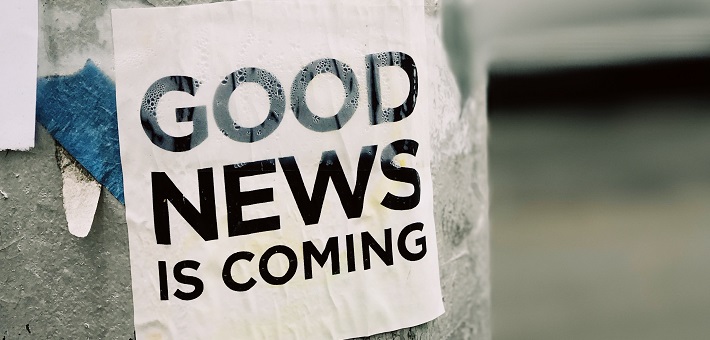Commentary on Matthew 11:2-11
Matthew 11:2–11 captures a prison correspondence between John the Baptist and Jesus. Jesus learns of John’s arrest at the beginning of his ministry in Galilee (Matthew 4:12). But it is not until well into Jesus’ public teaching and healing that the two regain contact in Matthew 11. In the chapter prior to their correspondence, Jesus teaches about the costs and rewards that accompany discipleship. He warns his followers of the persecutions they will face, including being “dragged before kings and governors” (Matthew 10:18), a fate similar to John’s. Jesus reminds his followers that his message is meant to disrupt the world (why?), bringing a sword rather than peace.
John becomes an example of the cost of such ministry and its disruption of the Roman concept of peace, for while the Pax Romana celebrated imperial peace and prosperity, it was only achieved through conquest and exploitation of peoples and resources. John’s baptismal ministry and messianic message stood in stark contrast to the Pax Romana. This bold critique landed him in prison.
John the Baptist in prison
In prison, John is in a vulnerable, liminal space. Roman prisons were spaces where one awaited trial or execution, unlike the long-term incarceration practices we are familiar with today. While being imprisoned was not meant as an ultimate punishment, it was a place of physical violence and psychological terror. Prisons were filthy, overcrowded, and devoid of natural light. Sanitation and basic resources like clean water were scarce. Beatings and restraints limited movement and stripped autonomy.
The space and practices within prison were meant to evoke fear and shame. They were reminders of Roman power over a subject’s life and death. Incarceration helped maintain social hierarchy, which was a foundation of the Pax Romana. Imprisonment particularly impacted members of the lower social status and non-citizens, as those with greater means could be placed under house arrest.
Despite how prison was intended to instill fear and shame not only in the incarcerated but in their loved ones, John is not abandoned by his followers. John’s community remains in regular contact with him. This is particularly important because John is dependent on his community for his survival on multiple levels.
Physically, ancient prisons did not provide for the basic needs of the incarcerated, such as food and clothing. Thus, the community of the incarcerated had to visit them to provide sustenance. On psychological and interpersonal levels, John also relies on his community to connect him relationally to what is taking place in broader society. In doing so, the community helped counter the isolation and despair that could arise from incarceration. John needed his community to help him survive the multiple forms of imperial oppression he experienced, and they showed up for him.
Are you the one?
Despite John’s circumstances, he does not focus on himself, but instead focuses on Jesus. He needs to know if Jesus is the one they’ve waited for or if another is still to come. Is Jesus the one who will bring deliverance and new life in the midst of the violence and terror of the Roman occupation?
There are two important points to glean from John’s question. First, John does not ask this question for himself. He uses the plural form of the verb meaning “to look or wait for” (prosdokomen). This indicates that he is just one person in a community of people waiting for Christ to come. Even in the most personally dire times, salvation is not an individual pursuit for John. Second, John recognizes that the work of liberation is a process. If Jesus is not the one they are awaiting, the community needs other strategies of resistance and resilience to survive until the Messiah arrives.
John’s question—“Are you the one…?”—resonates in our present time. As ICE raids, detention centers, and mass deportations terrorize communities, many are asking: What is the good news for our times? How is God delivering God’s people in these fear-filled times? Such realities and questions invite us to consider how we, as communities of faith, can respond. How might we be present with those seeking the Messiah in the midst of incarceration, family separations, and uncertainty? Jesus’ response to John offers clues to how we might respond.
Actions speak louder than words
Jesus’ response to John is not a recounting of his identity as the Son of God. Nor is it a theological treatise about his beliefs. Instead, Jesus responds by naming his actions and the impacts they have on the community. Through Jesus, community members have gained sight, mobility, hearing, et cetera. These are not just cures to address physical ailments. They are opportunities for healing those who have been ostracized by society as they are reintegrated into the collective. Of particular note is Jesus’ final statement: “The poor have good news brought to them.”
This phrase is often interpreted as sharing the gospel with the poor. The Greek reads, more literally, that the poor are gospelized. They don’t just receive good news. They experience it. This reflects the long list of actions Jesus has just named. Those most vulnerable in society—like John in prison—receive the gospel not only through words but through actions and community relationships. Caring for those who are most vulnerable, oppressed, and ostracized is a sign of living out the good news, just as Jesus did throughout his ministry.
Jesus’ response is a call to action. Any who follow Jesus are called to embody the good news as Jesus did, sharing it through actions with those who are most vulnerable. More than offering words and platitudes, people of God are called to embody the good news. It is a call to care for and reintegrate those cast out or overlooked by communities: the forgotten in prisons and detention centers, shelters and hospitals. It asks us to consider how our actions answer the question “Are you the one…?”
How can we better become the ones who embody the good news, challenging societal injustices? How do we empower our communities to collectively continue Jesus’ ministry, bringing about liberation and glimpsing the kin-dom of God? How are we the one?



December 14, 2025